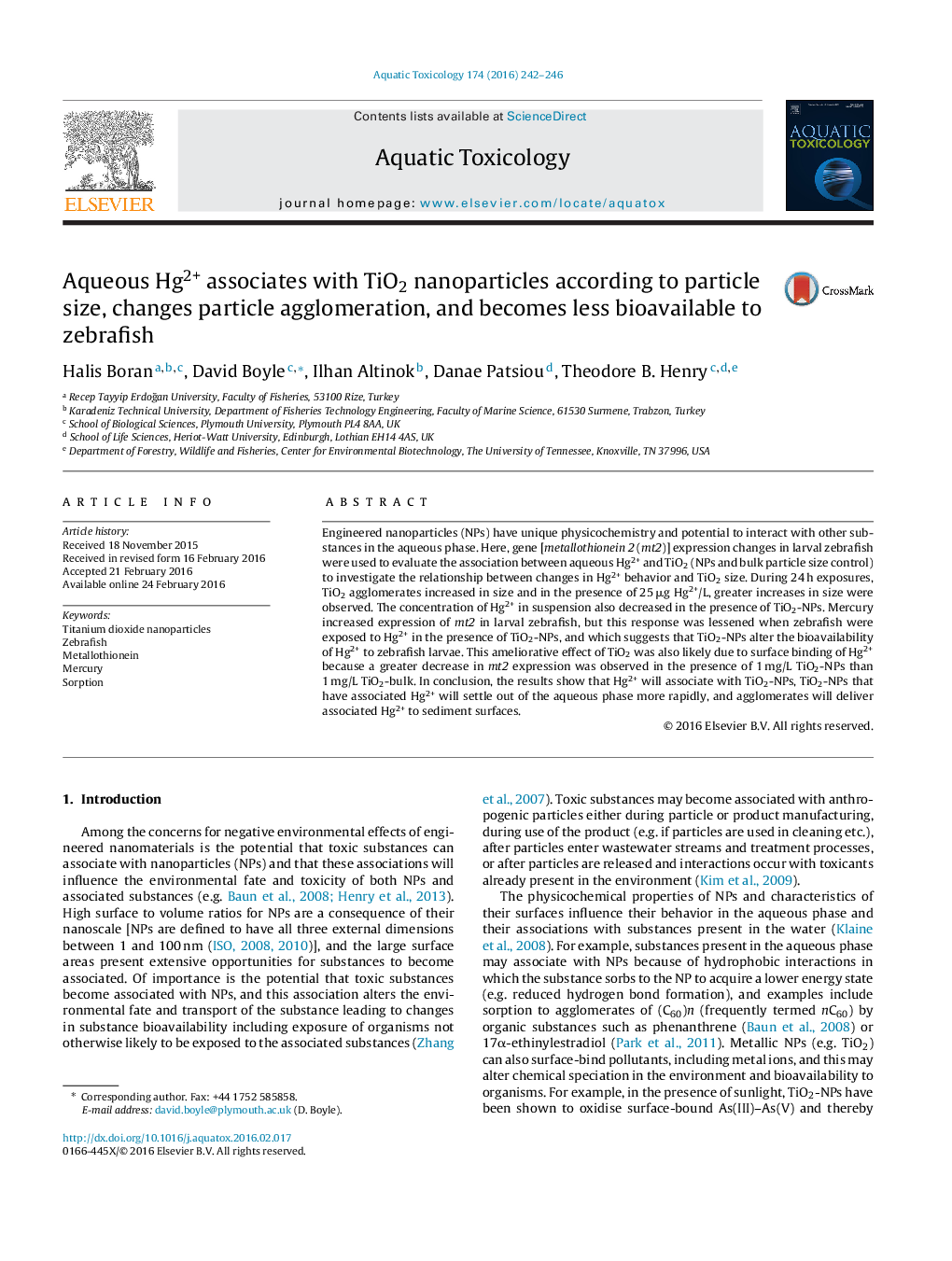| Article ID | Journal | Published Year | Pages | File Type |
|---|---|---|---|---|
| 6381922 | Aquatic Toxicology | 2016 | 5 Pages |
Abstract
Engineered nanoparticles (NPs) have unique physicochemistry and potential to interact with other substances in the aqueous phase. Here, gene [metallothionein 2 (mt2)] expression changes in larval zebrafish were used to evaluate the association between aqueous Hg2+ and TiO2 (NPs and bulk particle size control) to investigate the relationship between changes in Hg2+ behavior and TiO2 size. During 24 h exposures, TiO2 agglomerates increased in size and in the presence of 25 μg Hg2+/L, greater increases in size were observed. The concentration of Hg2+ in suspension also decreased in the presence of TiO2-NPs. Mercury increased expression of mt2 in larval zebrafish, but this response was lessened when zebrafish were exposed to Hg2+ in the presence of TiO2-NPs, and which suggests that TiO2-NPs alter the bioavailability of Hg2+ to zebrafish larvae. This ameliorative effect of TiO2 was also likely due to surface binding of Hg2+ because a greater decrease in mt2 expression was observed in the presence of 1 mg/L TiO2-NPs than 1 mg/L TiO2-bulk. In conclusion, the results show that Hg2+ will associate with TiO2-NPs, TiO2-NPs that have associated Hg2+ will settle out of the aqueous phase more rapidly, and agglomerates will deliver associated Hg2+ to sediment surfaces.
Related Topics
Life Sciences
Agricultural and Biological Sciences
Aquatic Science
Authors
Halis Boran, David Boyle, Ilhan Altinok, Danae Patsiou, Theodore B. Henry,
